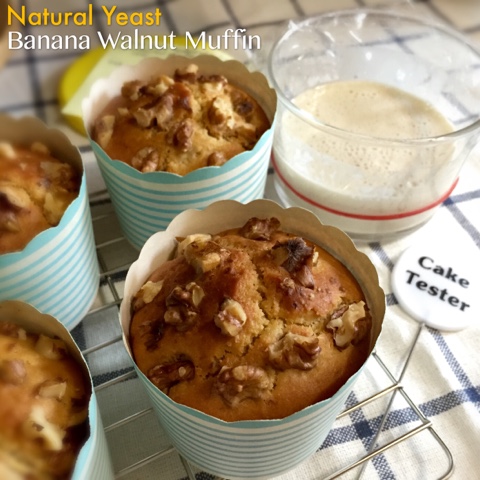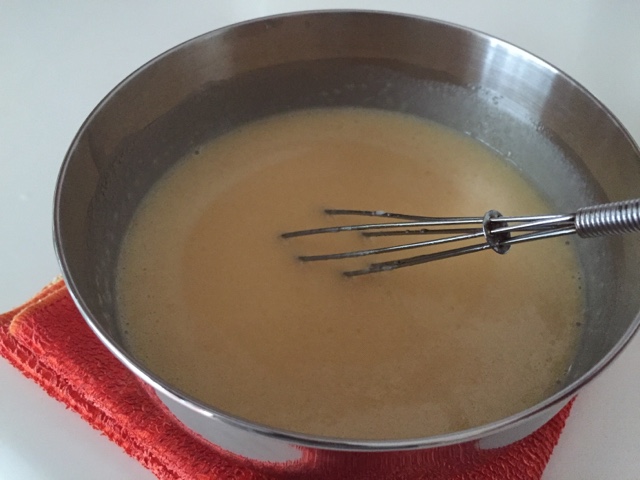This banana walnut muffin differs from my usual muffin in terms of the leavening agent used. I used the natural yeast to take over the job of the baking powder. The former produced an equally golden, soft yet springy crumb as compare to the latter.
The drawback of using natural yeast, is the exceptionally LONNNNNNG waiting time! 🙄 It took me almost 6 hours, from waiting for the natural yeast to raise after feeding, to end of baking 😅
You ought to be extremely patient to use this method to prepare muffin 😴 However, I treated this as an alternative option to make good use of my old natural yeast 😁
Love this recipe, shared by my FB friend Yeo SH, which yielded a not-too-sweet, and not-too-rich, but moist muffin. Furthermore, there's no smell of yeast 😆
Last to mention, this is my natural yeast, cultivated directly from bread flour and water, maiden project 💕
Yield: 5 x 6cm diameter muffins
Ingredients
All ingredients in room temperature
Using 55g omega 3&6 egg
Using 100% hydration natural yeast
40g natural yeast 天然酵母
50g fresh milk 鲜奶
1 beaten egg 蛋液
40g raw sugar 黄砂糖
35g rice bran/vegetable oil 米糠/植物油
100g all purpose flour 中筋面粉
90g ripen banana 熟香蕉
1/8 tsp baking soda 小苏打粉
20g walnuts 核桃
Direction
1. Feed natural yeast before use. For best result, the natural yeast is recommended to double its volume within 3 hours.
2. Mix natural yeast with milk till smooth.
3. Mix in the beaten egg and raw sugar till well blended.
4. Blend in the rice bran or vegetable oil.
5. Sieve in all purpose flour and fold briefly. It's alright if the batter is a bit lumpy.
6. Cover with cling wrap and wait for about 2 to 3 hours, or till the batter double in volume.
3 hours later
7. Fold in the mashed banana and baking soda.
8. Distribute the batter to 5 paper muffin cups, filling to about 1/2 the cup's height.
Cover and let them stand for about 1 to 2 hours, or till the batter reaches to 4/5 muffin cup's height.
1 hour 15 minutes later, when the batter is reaching the 4/5 cup's height, start to preheat oven to 180 degree Celsius for 10 minutes.
9. Break walnuts into smaller chunks.
Drop the walnut chunks onto the top of the muffin cups just before sending into the oven.
10. Bake at 180 degree Celsius for about 23 to 25 minutes at the middle rack of the oven.
Check with a "cake tester" to enure the muffin is thoroughly cooked.
11. Transfer the muffin to a wire rack to cool down.
Enjoy the muffin warm 💕
Recipe adapted from Yeo SH's sharing over Facebook with great appreciation 💕
In case you're interested in seeing the cultivation process of the natural yeast directly from flour and water, you may click the link:
I would recommend below listed natural yeast cultivation method which has a higher rate of success 💕


















































































